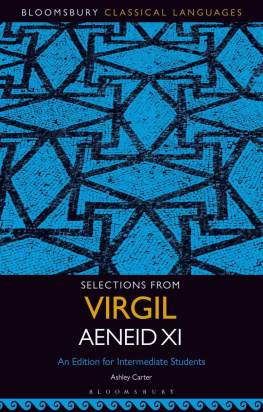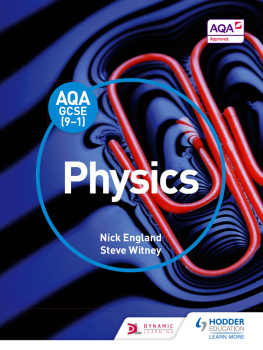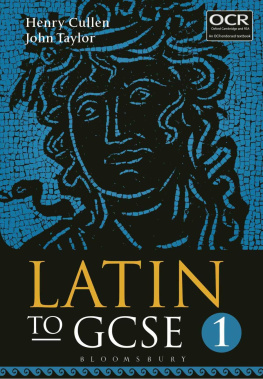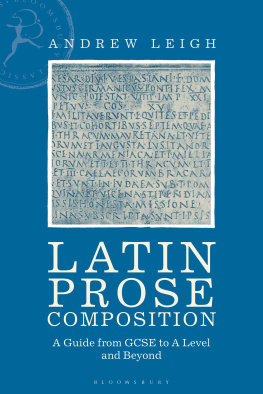Ashley Carter - Latin Language Tests for Levels 1 and 2 and GCSE
Here you can read online Ashley Carter - Latin Language Tests for Levels 1 and 2 and GCSE full text of the book (entire story) in english for free. Download pdf and epub, get meaning, cover and reviews about this ebook. year: 2015, publisher: Bloomsbury, genre: Detective and thriller. Description of the work, (preface) as well as reviews are available. Best literature library LitArk.com created for fans of good reading and offers a wide selection of genres:
Romance novel
Science fiction
Adventure
Detective
Science
History
Home and family
Prose
Art
Politics
Computer
Non-fiction
Religion
Business
Children
Humor
Choose a favorite category and find really read worthwhile books. Enjoy immersion in the world of imagination, feel the emotions of the characters or learn something new for yourself, make an fascinating discovery.

- Book:Latin Language Tests for Levels 1 and 2 and GCSE
- Author:
- Publisher:Bloomsbury
- Genre:
- Year:2015
- Rating:3 / 5
- Favourites:Add to favourites
- Your mark:
- 60
- 1
- 2
- 3
- 4
- 5
Latin Language Tests for Levels 1 and 2 and GCSE: summary, description and annotation
We offer to read an annotation, description, summary or preface (depends on what the author of the book "Latin Language Tests for Levels 1 and 2 and GCSE" wrote himself). If you haven't found the necessary information about the book — write in the comments, we will try to find it.
Latin Language Tests for Levels 1 and 2 and GCSE — read online for free the complete book (whole text) full work
Below is the text of the book, divided by pages. System saving the place of the last page read, allows you to conveniently read the book "Latin Language Tests for Levels 1 and 2 and GCSE" online for free, without having to search again every time where you left off. Put a bookmark, and you can go to the page where you finished reading at any time.
Font size:
Interval:
Bookmark:
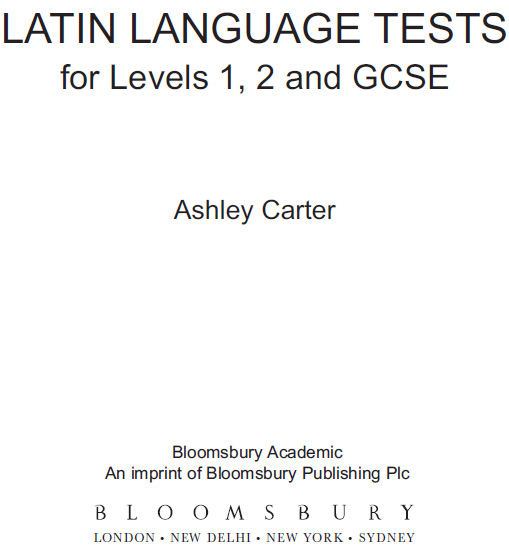
These differences are sufficient to call for a separate series of tests for each unit of the two specifications, apart from A402 and 9524, which are so similar in form and content that a single series should suffice for both. All the tests have been modelled as closely as possible on the published specifications and sample assessment materials, including past papers. The aim has been to provide students with tests that approximate as closely as possible to the real thing, so that when they take the examinations, there will be no surprises. Teachers should also have a reliable and accurate tool for assessing progress. For reasons of space, the layout of the tests differs from that used in live examinations, for the simple reason that all public examinations at these levels are obliged to provide space for answers on the question papers. In a book that will be reused, this would not be appropriate.
Mark schemes are available for every test, and may be purchased from the publisher in the form of a separate booklet, Latin Language Tests: Mark Schemes. These schemes are also based as closely as possible on those used in live examinations. Teachers should be aware, however, that, in the light of experience, the examination boards are likely to reassess periodically the usefulness of the schemes originally adopted. It must also be remembered that mark schemes tend to contain only one of several, sometimes many, possible answers; teachers must use their discretion in determining whether particular answers should be accepted or not. The author is indebted to Alan Clague for all the advice and suggestions he offered during the compilation of this book, and especially for checking the accuracy of the Latin.
Please remember to make your answers legible; if an Examiner cant read what you write, s/he wont be able to give you the mark.In translations, check that you have written something for every Latin word, using guesswork if you dont know a word. Remember that a guess may be close enough to gain some credit, whereas a blank space can earn no marks at all. You will find that most questions start with some Latin words in italics. An example from the very first test is Clemens Septimus (lines 1-2): who was Septimus?. The two Latin words in italics are intended to direct you to the part of the story where you will find the answer. Unless the question is clearly asking you to look elsewhere, you should always confine your answer to what is inside these quoted words.
Please note that proper names are glossed only the first time they appear and are not underlined here, though in real examination papers they usually are. Remember that all proper names should be rendered in English in the nominative case. All underlined words are glossed beneath the passage.
These tests contain 70% comprehension questions and 30% translation, split into short sentences or phrases. The storylines all relate to some aspect of daily life, and are entirely imaginary. There is usually a slight gradient of difficulty, with simpler sentences at the start and more challenging Latin and questions towards the end.The mark schemes generally allocate one mark for every Latin word that forms part of the answer, whether in the form of comprehension or translation. Exceptions to this are when glossed or repeated words are included: these often carry no separate mark; similarly there is no separate mark in comprehension answers for prepositions: these are regarded as forming a unit of sense in combination with their dependent nouns. Confusion between singular and plural nouns and verbs is one of the commonest sources of error in these tests. Students should be advised to pay particular attention to these. . 1 Claudia erat filia Clementis.
Clemens filium quoque habebat; nomen 2 eius erat Septimus. olim Clemens Septimo dixit, volo te hodie mecum 3 venire. iam tempus est tibi ad thermas ire, quod iuvenis es, non puer. 4 Septimus laetus erat, quod numquam antea thermas intraverat. 5 Claudia tamen, sed pater, inquit, ego quoque volo thermas visitare . 7 si tu thermas videre vis, necesse est tibi cum matre ire. ego solos 8 iuvenes in thermas ducere possum. 9 mox Septimus et pater laete e domo discesserunt. servus quoque 10 ibat, oleum et strigiles portans. multi alii cives per vias urbis iter 11 faciebant. thermae , ad quas omnes festinabant, maximae erant. ubi 12 intraverunt, Septimus attonitus erat, quod palaestra erat plena 13 hominum currentium clamantiumque. ubi 12 intraverunt, Septimus attonitus erat, quod palaestra erat plena 13 hominum currentium clamantiumque.
Clemens filium in apodyterium 14 duxit. vestes servo tradiderunt; ille eas custodiebat . postquam in 15 tepidario paulisper sederunt, caldarium intraverunt, sed Septimus 16 celeriter exiit, quod difficile ei erat calorem tolerare . pater risit. 17 postquam frigidarium intraverunt, Septimus in aquam laetus desiluit . ubi in apodyterium redierunt, vestes quaerebant; 20 sed eas videre non poterant. servus, qui vestes custodiverat , aberat . 21 Clemens iratissimus erat. ei necesse erat novas tunicas emere . 22 simulatque e thermis exierunt, Clemens uxorem et filiam conspexit. 23 quid vos facitis? inquit Clemens attonitus . in thermis fuimus, 24 respondit uxor. laetissimae sumus, inquit Claudia, quod in thermis 25 servus noster anulum aureum invenit . servus mihi eum dedit. ecce ! 26 nonne anulus pulcher est? vos estis felices , dixit Clemens, sed ubi 27 est servus? ego eum ad tabernam misi, respondit uxor. iam Clemens 28 erat etiam iratior. Names
| Claudia, -ae f. | Claudia |
| Septimus, -i m. | Septimus |
| Clemens, -entis m. | Clemens |
| nomen, -inis n. | name |
| tempus, -oris n. | time |
| thermae, -arum f.pl. | baths |
| antea | before |
| visito, -are | I visit |
| vobiscum | With you |
| si | if |
| necesse | necessary |
| oleum, -i n. | oil |
| strigilis, -is f. | strigil (for scraping oil) |
| attonitus, -a, -um | astonished |
| palaestra, -ae f. | exercise area |
| plenus, -a, -um | full |
| apodyterium, -i n. | changing room |
| vestes, -ium f.pl. | clothes |
| custodio, -ire, -ivi | I guard |
Font size:
Interval:
Bookmark:
Similar books «Latin Language Tests for Levels 1 and 2 and GCSE»
Look at similar books to Latin Language Tests for Levels 1 and 2 and GCSE. We have selected literature similar in name and meaning in the hope of providing readers with more options to find new, interesting, not yet read works.
Discussion, reviews of the book Latin Language Tests for Levels 1 and 2 and GCSE and just readers' own opinions. Leave your comments, write what you think about the work, its meaning or the main characters. Specify what exactly you liked and what you didn't like, and why you think so.

